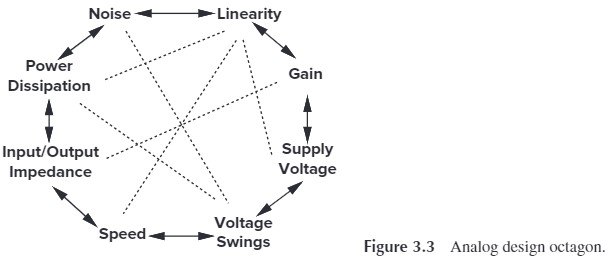\[\begin{align*}
\newcommand{\dif}{\mathop{}\!\mathrm{d}}
\newcommand{\belowarrow}[1]{\mathop{#1}\limits_{\uparrow}}
\newcommand{\bd}{\boldsymbol}
\newcommand{\tx}{\text}
\newcommand{\L}{\mathscr{L}}
\newcommand{\p}{\partial\,}
\end{align*}\]
Applications and General Considerations
Applications of Amplifier:
- to drive a load
- to overcome the noise of a subsequent stage
- to provide logical levels to a digital circuit
- to play a role in feedback systems (Chapter 8)
Amplifier categories
| Common-Source Stage (共源) | Source Follower (源极跟随器) | Common-Gate Stage (共栅) | Cascode (共源共珊) |
|---|---|---|---|
| With Resistive Load | With Resistive Bias | With Resistive Load | Telescopic |
| With Diode-Connected Load | With Current-Source Bias | With Current-Source Load | Folded |
| With Current-Source Load | |||
| With Active Load | |||
| With Source Degeneration |
For each amplifier above, we will
- analyze the MOS’s stage using the equation we learn at chapter 1
- introduce the small-signal model
- discuss how to increase the gain
An ideal amplifier: output is a linear replica of the input: $y(t)=\alpha_1 x(t)$, where $\alpha_1$ denote the gain. if we consider the bias (dc operating) point, the overall output is $y(t)=\alpha_0+\alpha_1 x(t)$
Any amplifier is a compomise (trade-off) between “analog design octagon”:

In this chapter, we are going to discuss how to calculate $A_v$ and $r_o$